It is best to arrive in Cancun early in the morning, rent a car at the airport, turn your back on the city and head for the coast. Anywhere on the coast. To Puerto Morelos, for example, which is nearby. Go to a beachside restaurant with a thatched roof and wooden tables. Have some Motuleños eggs, panuchos, chilaquiles, and even cochinita pibil for breakfast there, and shake off with freshly made fruit juices the sticky drowsiness left behind by trans-oceanic flights. In front of the Caribbean Sea and the white sand, the morning light is so clear that it dazzles. Invites you to dive into Yucatan.
There is much to discover on this magnificent peninsula shared by the Mexican states of Quintana Roo, Campeche and Yucatán. It was the scene of the encounter between two civilizations that were like two different universes. It happened five centuries ago, but the vestiges are very visible. There are imposing Mayan ruins, charming colonial cities and miscegenation that has also produced delicious cuisine. All this in a flat region, in which almost 70% of the surface is covered by jungles and their contour, surrounded by beautiful beaches. The latter are the great claim that attracts most tourists, and it is a powerful claim. In Cancun, Playa del Carmen, Cozumel or Isla Mujeres there are not only pleasant beaches but also diving, reefs, shark sighting, theme parks with attractions, and lots of nightlife.

But the Yucatecan essences are not there. The proposal is to go to Tulum. This insipid-looking town crossed by the highway has an unbeatable attraction: the only Mayan ruins overlooking the Caribbean. The old constructions emerge gray on the rocks of the same color and among the vegetation. It is a question of a modest deposit in dimensions compared with the enormities of Chichén Itzá or Uxmal. But there are what are suspected to be the last buildings built by the Mayans before the arrival of the Spanish (in the late postclassic period, between the 13th and 15th centuries), a strategic commercial enclave converted into a fortress surrounded by walls. The sobriety of the stone is overwhelming, but in its day the buildings were painted in bright colors, red, yellow, blue... What they do preserve are their Kukulcan (feathered serpents), their hieroglyphs and their veneration of the bee. This continues to be the case and Yucatecan honey is very present in everyday life. At breakfast, especially.
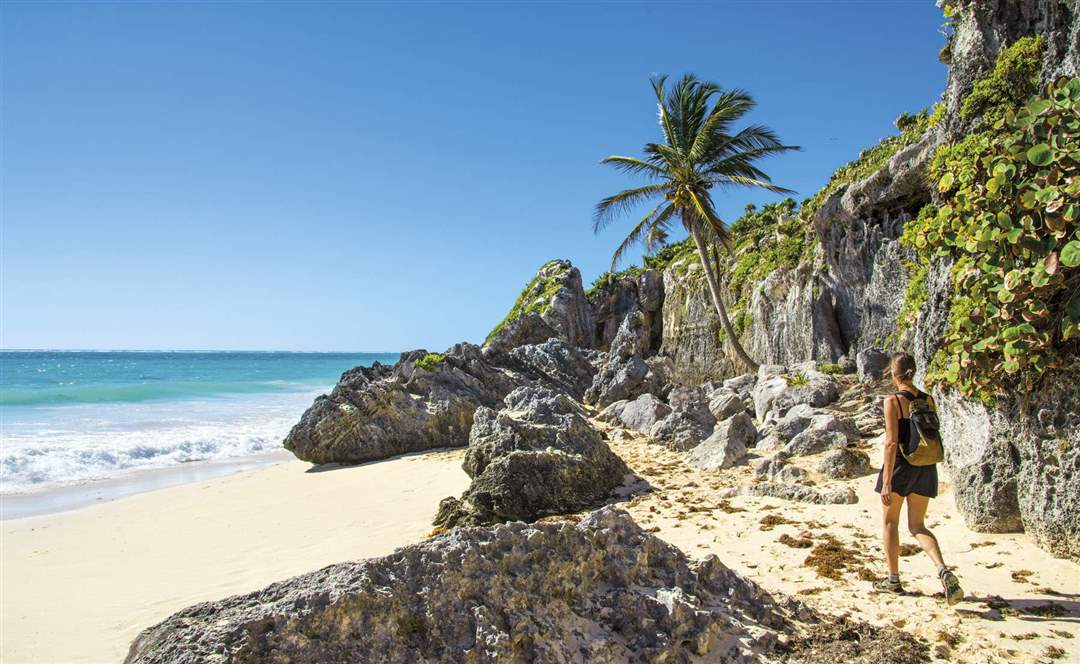
The most beautiful thing about Tulum is bathing on the beach under the ruins, from where more than five centuries ago the boats with which the Mayans traded along the coast and even reached Belize left. It is recommended to swim in the turquoise water and move a few tens of meters from the shore. Raise your eyes and, with the stupefied and happy gaze with which the sunflowers look, contemplate the Castle that from above dominates the passing of the centuries. It is better to do it first thing in the morning or late in the afternoon, avoiding the crowded gibberish that in the middle of the day clouds the charm of the place.
Where there is room for everyone is in Playa Paraíso, which has a very well-known name and is close by. Extensive, with fine white sand, with palm trees that at some points are almost horizontal as if to submerge in the clean water. Here you can spend days without realizing it. It is a postcard of the Caribbean ideal.
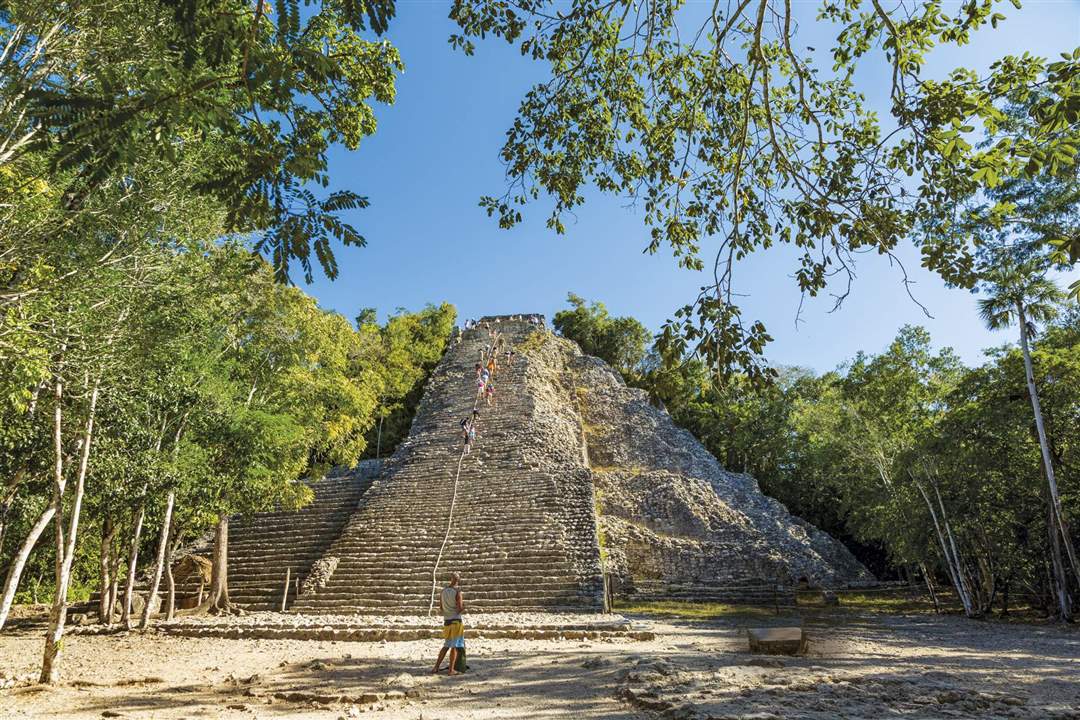
From Tulum you can continue south to enter the Sian Ka'an biosphere reserve, a tropical jungle of more than 5000 km2 with mangroves and an enormous wealth of fauna: jaguars, pumas, anteaters, eagles, raccoons, monkeys. ...
But it is usually more common to head northwest, towards Valladolid and, on the way, visit the Cobá site. It resists in the middle of the jungle and that gives it a certain resemblance to Tikal, in Guatemala. Both Mayan enclaves also have in common their slender pyramids and that many of them have yet to be recovered from the jungle, which has turned them into leafy mounds. The area is so vast that you can walk in any direction. Where vines, palms, orchids and acacias now grow, it is easy to imagine the old sacbé, the great elevated and cobbled avenues where the almost 50,000 inhabitants that came to have the city walked, which lived its heyday between the 9th and 10th centuries. Nohoch Mul stands out, the great pyramid of 42 meters high, one of the most majestic Mayan constructions, which emerges among the greenery of ceibas and cedars.
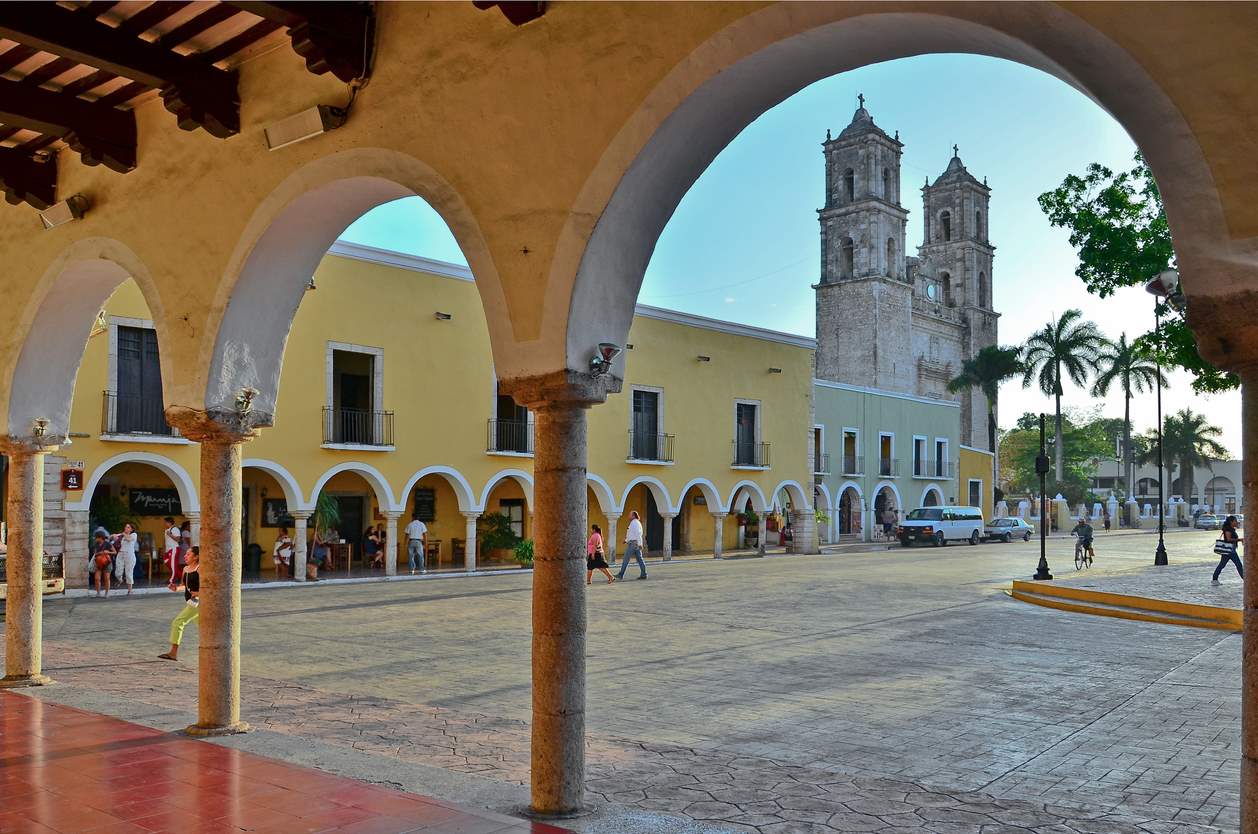
Valladolid is a charming city with a colonial air, cobbled streets, arcades and buildings with quiet patios. Construction began in the mid-16th century on Zaci, a pre-Columbian city that was dismantled. Mayan women, with their colorful huipiles, chat on the corners and the city stands out for the central square, with the City Hall and the San Servacio cathedral. But, above all, the San Bernardino temple and the Sisal Convent, built between 1552 and 1560 with a vocation both as a fortress and as a temple. An almost unavoidable visit is the Donato Bates Herrera municipal market, which offers a festival of colors, smells and flavors behind its dozens of arches. There are those who dare to try here the different intensities of habanero peppers, an institution in Mexican gastronomy.
A couple of blocks from the central square of Valladolid is the impressive Zaci cenote. These windows between the world and the subsoil have always had a more spiritual than the playful dimension in Yucatan, where they form part of the very identity of the region. The substratum of the peninsula is limestone and is crossed by underground rivers that pierce caves. It's a spongy place in geological terms. Sometimes the ceiling of these deep caverns caves into the point of opening a skylight. Cenote is a term that comes from the Mayans and that comes to mean cave with water. For this culture, they came to be a door to the underworld, and traces of human sacrifice have even been found in some, especially children. The Mayans had a devotion to water as a divine element.

Now in the cenotes you swim and dive. There are about eight thousand in the entire Yucatan peninsula. Sometimes they are in the middle of the jungle, others in the middle of a city, a hacienda or an archaeological site. Along with Valladolid, Dzitnup stands out. Near Tulum, the Dos Ojos. In some you advance through underground and dark channels and under the water they are heard like bells. There are small fish that cut the light beam of the flashlights. Stalactites threaten from the ceiling, where roots also slip in, hanging damp. Floating face up under the large hole that lets in sunlight, surrounded by ferns and jungle vegetation, provides an experience of fusion with nature.
If possible, it is worth staying in one of those haciendas that flourished with the boom in the market for henequen ( Agave fourcroydes) . It is the plant whose fibers were used to make ropes and were already used by the Mayans. But it was in the last half of the 19th century and the first half of the 20th, with mechanized processes, when the industry took on an enormous dimension. That was a fabulous business until synthetic materials arrived and the balloon burst. What remains, however, are the stately haciendas surrounded by stone walls, with enormous rooms, noble furniture imported from Europe, ostentatious battlements, marble, carillons, busts of mustachioed lords and four-poster beds.
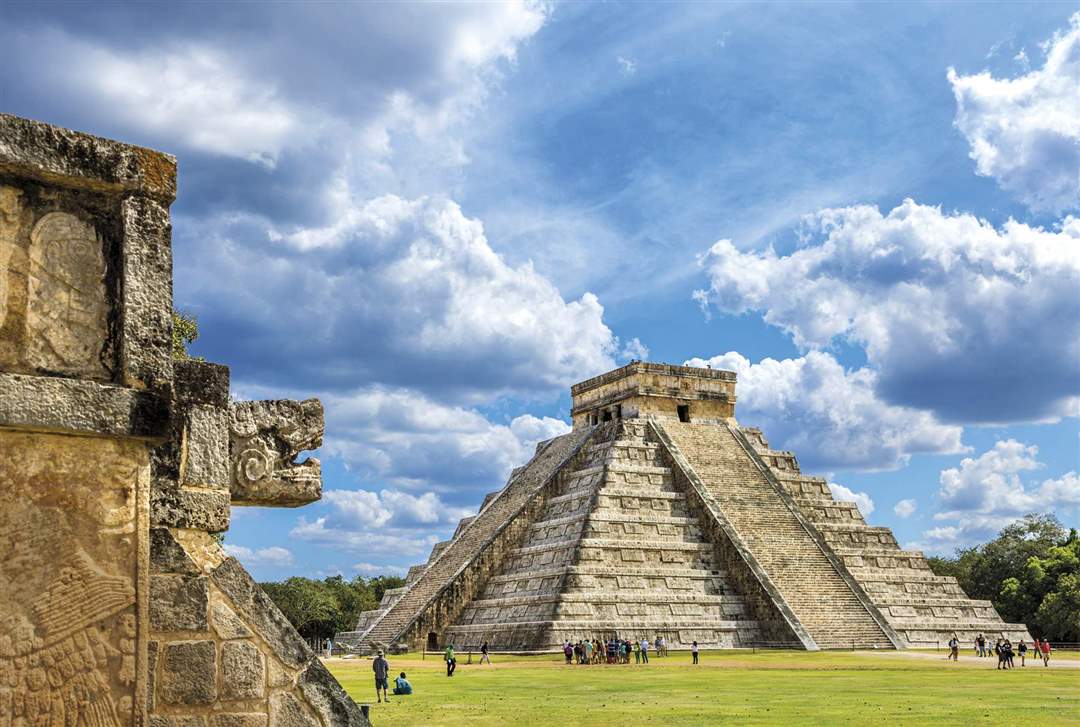
It's too lazy to leave so much luxury behind, but you have to get up early for the big date: Chichen Itza. No matter how many archaeological sites have been visited throughout the world, the enormity of the Mayan civilization is striking. The powerful rotundity of El Castillo (the great pyramid) is combined with a very fine level of execution in the carvings, in such a way that when the Kukulcán equinoxes arrive, the feathered serpent, through a play of shadows, seems to descend to earth through the stairs.
Chichén Itzá was born in the 5th century, and in the 10th the Toltec influence appears, a civilization that consolidated the fondness for human sacrifices. The ball game court dazzles, the largest in Mexico, with reliefs where the decapitations of players are represented. It is not clear whether the winners or the losers were put to the knife. And it would not be strange if it went to the first, because in that culture it was valued above all to accumulate merits to survive in the memory of future generations. To die fighting and have stories told about him was the highest honor for a warrior.
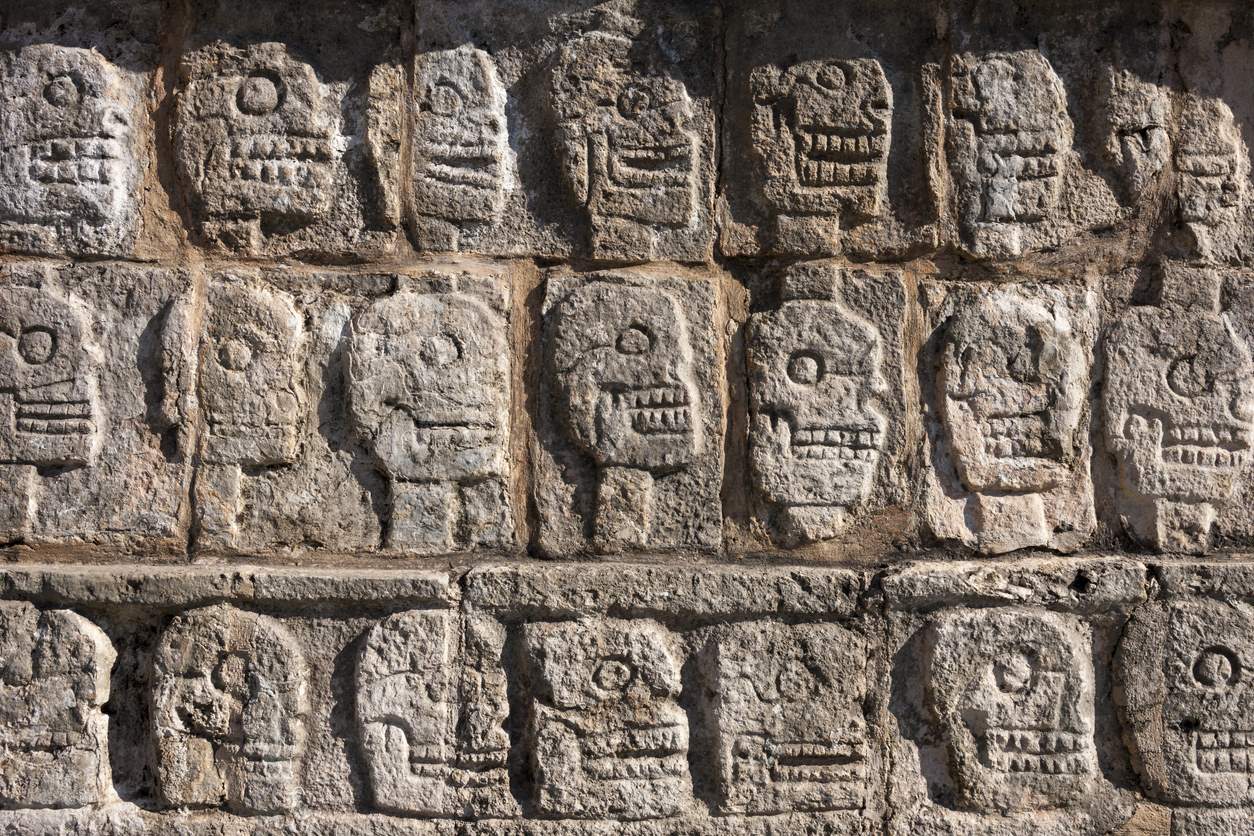
Be that as it may, on a wall that has been baptized as the Platform of the Skulls (Tzompantli) you can see that, skulls, and also eagles eating people's hearts. There the heads of those who were sacrificed were exposed.
Despite the truculence of these practices, a high level of refinement is also perceived: from the steam baths to the astronomical observatory, with doors and windows aligned with certain celestial bodies on certain dates – the Mayans had extensive knowledge of celestial phenomena, including the 584-day Venus cycle. This striking combination of delicacy and barbarism is a duality present in almost all great civilizations.

On the way to Mérida, it is convenient to make a small detour and visit Izamal. The first, because the town is well known as all its buildings are yellow, it is known as "the yellow city". The second, is because of the great pyramid in the heart of the city, Kinich-Kakmó, which is like a mountain with terraces. You can climb to the top, one of the largest in the Yucatan, which sometimes looks more like a geographical accident than an infrastructure built by human beings. Fray Diego de Landa speaks a lot about it in his work Relation of the things of Yucatan. Whoever was the bishop of the place in 1566 took Izamal as a reference to locate places that were apparently much more renowned, such as Chichén Itzá itself.
Diego de Landa was a controversial figure. On the one hand, in 1562 he carried out a great auto de fe in which thousands of idols and tons of Mayan documents were burned, thus losing a vital heritage for learning about this culture. On the other, his book is today a fundamental tool to know what that civilization was like. He even declared himself surprised by the Mayan greatness: "In Yucatan there are many buildings of great beauty, which is the most notable thing that has been discovered in the Indies, all of the very well carved stonework without having any kind of metal in it with which to they could work. That also made them easy to dismantle, and with those stones the conquerors did their great works. For example, the convent of San Antonio de Padua, completed in 1561 right here in Izamal.

Mérida is the capital of Yucatán and the most populous city on the peninsula. It touches the 900,000 inhabitants. It's charming and possibly the best place to soak up the history of this part of the planet. Here is the Great Museum of the Mayan World, the Cathedral of San Ildefonso (also built with the stones of a previous pyramid) and the murals of Fernando Castro de Pacheco (1918-2013) in the Government Palace, which must be visited. They represent Gonzalo Guerrero, who after being shipwrecked on the Mexican coast joined the Mayan culture and later fought against the Spanish. Malinche, an Indian woman who worked as a translator for Hernán Cortés, had a son with him, played an important role in the conquest, and is often considered a great traitor to her people. The clash between two worlds or the beginning of miscegenation. Nearby, Paseo de Montejo exhibits the dazzling 19th-century mansions with which henequen-rich families wanted to emulate the great avenues of European cities.
Mérida is a city with a very cultural touch and in cafeterias, it can sometimes happen that a group of adolescent-looking students start discussing Kant and other philosophers with a magnificent mixture of passion and ingenuity. In the Plaza Grande there are 'you and me' seats where couples shake hands without going overboard. There are crepe stalls where they put cocoa and banana cream and a lot of other things.

And eat well. The cochinita pibil is perhaps the most emblematic dish: pork marinated in achiote and cooked underground. It turns out very juicy. The stuffed cheese is striking, a calorie bomb of Dutch influence that incorporates minced meat and sauce. On the healthy side is chaya, a shrub whose leaves lose their toxicity when fried and become very thin and crunchy slices. They say it is a superfood.
Gives Mérida arguments to spend a few days in it. The façade of the Casa de los Montejo is impressive –the city was founded in 1542 by Francisco de Montejo–, very controversial due to the statues of two conquerors using Indian heads as pedestals, which are represented in smaller sizes. It must be taken into account that in Mérida the identity of Yucatán with respect to the rest of the country was forged because the viceregal orders came directly from Spain and not from Mexico City. The name of Mérida is due to the fact that the Mayan vestiges reminded the conquerors of the ruins of Emérita Augusta in Extremadura.
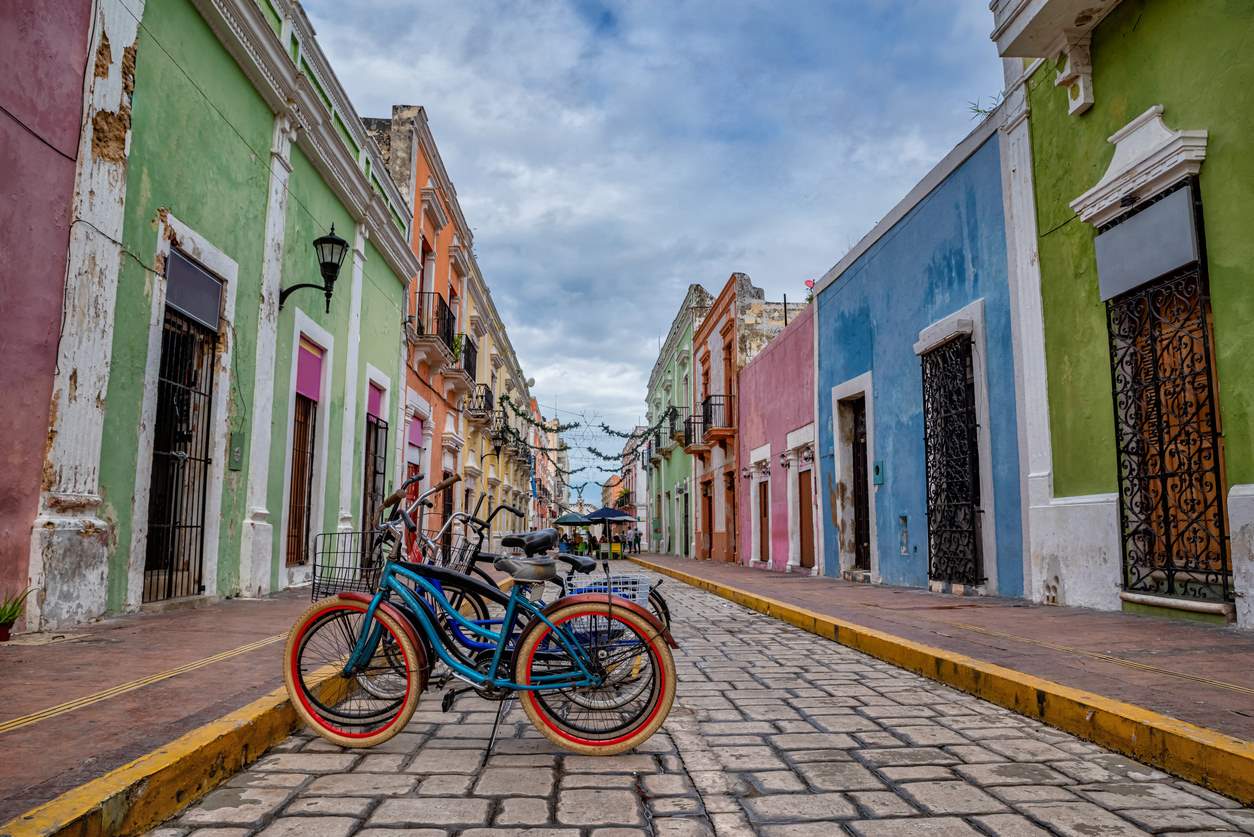
Campeche, the least touristic city in Yucatan, is very quiet. Its cobblestone streets are lined with low-rise buildings in pastel shades. Street vendors shout "I've got donuts!", the local donuts. It is a sweet city and there are places where they prepare chocolate as the ancient Mayans drank it, shaking it vigorously before serving it with a lot of foam on top. In the square, in the small walled center, there are usually concerts at night under the carob trees. Presiding over everything, the Cathedral of Our Lady of the Immaculate Conception. It is next to the sea, which means that you can walk along the boardwalk and also on the wall that protected the city from pirate attacks and has eight bastions.
Campeche is a good starting point for the Puuc Route, which connects the Mayan enclaves dedicated above all to the cult of Chaac, god of rain. It can be done in one or two days and there are even “Puuc buses”, with stops at the essential Uxmal, as well as Labná, Xlapak, Sayil, Kabah and Loitún.

Uxmal stands out for the powerful Pyramid of the Magician, very original thanks to its oval base, its rounded corners and its steep steps. The archaeological area occupies several square kilometers. Palatial buildings are built around a courtyard, such as the Quadrangle of the Nuns, the House of the Turtles or the House of the Birds.A whole day is required to enjoy the singularity of this extremely beautiful enclave and its decoration, with masks of the god Chaac or the throne of the two-headed jaguar. The immense Governor's Palace is a masterpiece of Mayan art. It sits on a platform 8 to 12 m high and its façade has 20,000 hand-carved stones arranged in geometric friezes. It includes some 400 glyphs of Venus placed on the cheeks of the Chaac masks.
65 million years ago in Yucatan a large meteorite called Chicxulub hit, and that is also the name of the town that is in the center of the crater of almost 200 km in diameter left by that cosmic cataclysm. Not that there is much to see, but the evocative power of the event is enormous. Here something crucial happened. Much later came the pyramids, churches, mansions, hotels, diving courses and crazy nightclubs.
Source: National Geographic (https://viajes.nationalgeographic.com.es/a/yucatan-busca-tesoros-caribe-mexicano_17704)